-
Posts
1,785 -
Joined
-
Last visited
Content Type
Profiles
Forums
Store
Help Articles
Posts posted by Wholemeal Crank
-
-
Waking up this topic with a question for a friend:
"This morning I was making a smoothie with a hachiya persimmon, lactose
free kefir, almond milk, and some cinammon. Everything sat there
together happily until I applied stick blender. It became liquid for
about 10 seconds & then curdled into something very thick & icky.
Tasted just a dab & it was horribly tannic. I guess the persimmon
wasn't fully ripe even though it was soft all over & the bit I tasted
before adding it wasn't tannic.
But does tannin lead to curdling? I've done this before but maybe it
was with perfectly ripe hachiyas."
Anyone know what might have gone on here with the texture of the smoothie?
-
I had already bought too much teaware recently, and was trying not to buy more when I saw that piece. I think I waited 3 or 4 days, half hoping someone else would buy it, but then justified the purchase by getting a second one as the perfect gift for a tea friend who did some petsitting for me. The deep blue on black is so rich and very hard to capture in a photo, because of the gloss of the glaze.
(BTW, he's got a fantastic larger bowl with the Tenmoku/Nuka combination on his Etsy site here that I have been trying not to buy for several months now.)
-
Some new teawares acquired over the past six months or so....
a summer galaxy glaze guinomi by Tetsuako Nakao
a Michael Coffee yunomi with black tenmoku and nuka glaze
I inherited this 'yixing' set with a giant (600mL!) dragon teapot
I found it among my father's belongings while cleaning out the clutter in his study.
the dragon theme is pretty cool.
And a 'steel glaze' guinomi by Toshiyuki Suzuki
-
A very good treat indeed, to have a new group of oolongs to enjoy.
Today started with Song Zhong Dan Cong Oolong from Tea Habitat, continuing a session from yesterday--I packed so many leaves into my little pot that I am still barely able to do more than flash rinses to keep the infusions as dilute as I prefer, and I think I am up to 15 or so.
I took a break for some variety--Ya Bao white buds from Norbu, with a few disks of fresh ginger sliced into the pot. The combination was pleasingly zingy.
I've been drinking the usual abundance of oolongs, a little puerh, and morning sencha. I'm on the last of my senchas from my order from O-Cha, but have enough from Yuuki-Cha and Den's left so that I won't be ready for another order for months yet. I hope they have some of the lovely Kamairichas from our tasting still in stock by that time.
-
Does it taste thinner/lighter in addition to not-sweet? I'm curious because typical hot chocolate is pulverized beans, then dissolved or suspended in liquid, with the cocoa butter removed (hot cocoa) or left in (true hot chocolate). And I wonder if some of that richness comes out when the beans are effectively crushed and steeped instead of consumed entire (pulverized, but the whole shelled bean is consumed).
-
It's continuing as an all-Norbu day here: some Da Hong Pao after the Zhejiang green, San Nen Bancha for a toasty complement to a light supper of fruit and cheese, and now to some of this year's amazing White Oolong. It's so pleasant when I get to spend a day in the kitchen, cooking and enjoying tea throughout.
-
Starting my day with Verdi on the stereo, fuzzy-cooked oats with pine nuts and blueberries, and some Gu Zhu Zi Sun, Zhejiang green tea from Norbu, drinking from my "Rock" Hagi teacup by Shibuya Eiichi. Such a nice way to start the day. Later, I'll be baking gingerbread houses and doubtless nibbling lots of spicy trimmings, so will probably go with something toastier and darker for tea--perhaps a nice Wuyi oolong?
-
I have very little experience with soft candies besides caramels, but I'd think quince would make a spectacular base for some cloves, or if the whole quince perfuminess was too strong for his tastes, a mix of quince and apple.
-
My standard gingerbread recipe is very tasty, and depending on the conditions of baking, makes anything from a delicate tasty cookie to an exceptionally sturdy gingerbread house. Abundant pictures in my flickr set from a session building a gingerbread house with my niece a few years ago (she's in high school now, yikes!).
And one just to whet your appetite:
Completed House by debunix, on Flickr
It is that time of year, and this weekend I may try for as many as three, depending on my ambition. I prefer to decorate them with dried fruit and nuts rather than candy when making them by myself, cutting shapes out from apricots and peaches when I'm getting ambitious. Will try to take some photos to update the set with the less sugared version when I do....
-
It's been a rather chaotic month for tea: travel for vacation, family events, and to satellite offices, has limited my tea time and online activity. But I've managed some tea nearly every day: a cool-brewed thermos full of a light green oolong, or properly brewed hot tea, mostly mellower and more tolerant oolongs or shu puerhs. Today, things are getting back to normal: started with some Korean Hwang Cha, yellow or "oolong" tea, Honyama sencha, and shortly something else.....some kind of puerh, probably a more aggressive young sheng. Ahhhh.
-
That's a lovely kyusu. If you avoid filling it entirely to the top, it's easier to pour out the tea without having the spout clog up and the pour slow as quickly (despite the sasame filter, slow pour still happens).
I occasionally use my unglazed kyusus for other green teas, but would avoid anything farther off in flavor profile than straightforward greens or mellow white teas (silver needle but not Bai Mu Dan), certainly no oolongs, puerhs, black teas.
-
I count the water added by estimation from the known volume of my cup, and ignore the volume of the leaves. So if I am describing brewing 1 g of leaf per 30mL water, that would bmean adding 2 grams of leaf to a gaiwan that holds about 60 mL at the usual volume to which I fill it (essentially the line where the lid meets the cup). If I get 45 mL of tea out, I drink that, and do not further dilute it unless I have made it too concentrated to be tasty.
-
I've been drinking a variety of teas, as usual, with more Japanese tea than usual recently because of the TT&D's lovely and unusual non-sencha teas from Yuuki-cha. I've also been drinking some green oolongs--both the Miyazaki from Yuuki-cha, and Jin Guan Yin and shade-grown TGY from Norbu. Yesterday I abused some of Norbu's Lao Cha Tou by dropping a big chunk in my thermos and topping with hottish water, and the lovely tea was still delicious. Tonight, I'm enjoying a set of infusions of Lao Ban Zhang loose sheng puerh from Norbu--a favorite tea that just keeps on being delicious, every time I come back to it.
I did make an unpleasant discovery about some delicious Dong Ding oolong that did not take to being held in my thermos over the afternoon, but that's about the worst thing that's happened in my week in tea.
-
I love them too, but not enough to seek them out.
-
When I am starting out with a new tea, if an infusion is unpleasant, the first thing I do is try a 50% or more dilution of fresh hot water from the kettle--transferring to a larger cup if necessary--to figure out if the problem is the concentration (due to excess of leaf or too long of an infusion) or the temperature. That is often a helpful step before changing temperatures, and doesn't "waste" any of the goodness of the leaf.
-
Another excellent session with the Organic Miyazaki Oolong Tea Kuchinashi by Yuuki-cha. Poised on the borderline between a typical green and a more typical 'green' chinese oolong tea, delicious delicate stuff. There is just a hint of red at the edges of the leaves, proving their 'oolong'-ness.
I'm not finding any metallic taste in the liquor, as brewed tonight in my porcelain korean pot, but a couple of times I've noted what might be a metallic aftertaste. I would never have noticed it without being 'primed' by the prior post.
-
Interesting. I don't remember any metallic taste. Will be trying it again tonight and try to see if I can taste that.
-
The Sakimidori still had more astringency than the Okumidori, but shorter/lower temp infusions kept it well in control. I never found it to be really unpleasant astringency or true bitterness.
-
I've now enjoyed both the Kamairchas in my Petr Novak kyusu, with an unglazed interior of iron-rich clay. I enjoyed them in my large chawan, I haven't taken a lot of notes, because the teas were so delicious and I find this combination so relaxing that I keep finding myself sipping, slurping, and gulping them and then, they're gone. My notes on the Sakimidori are particularly sparse....
4.2 grams in the kyusu, about 150 mL of filtered tap water (proportions very like my usual sencha brewing in the same kyusu)
30 seconds, 140 degrees: drank this and the next one with such straightforward pleasure that I forgot to take notes. It was not quite sencha, but from my kyusu and chawan and I just unconsciously treated it like my morning sencha. It is delicious.
45 seconds ,150 degrees: nuttiness, grassy, vegetal; a silky warmth to the liquor.
90 seconds, 150 degrees: mmm….
I did not do very well with the notes on this one. It continued a little nutty, grassy, vegetal, sweet, delicious, though about 6 or 7 infusions.
This time I cut back on the temps, and it was pretty well tamed for me.
The Okumidori tonight....4 grams of tea, 30 seconds 145 degrees first infusion, 150 degrees 2nd infusion 20 seconds again--amazingly sweet, and deep, and delicious, as before.
20 seconds, 165 degrees (oops, didn't check temp before pouring, was going to be 45 seconds, 155 degrees!): still mmmmm
160 degrees, 1 minute…..so tasty I forgot to stop and write notes!
170 degrees, 75 seconds: sweet, light, fading a bit, but floral hints still present, not much astringent, delicious
180 degrees, perhaps 2 minutes: still worth drinking, again, very close to sweetwater, but such pleasant sweet water....went for one more at 200 degrees, and it was still sweet and delicious.
-
Tried the oolong tonight:
The leaves are curly green twists, with a rich sweet scent, and hints of chocolate
2.3 grams of tea in a small porcelain gaiwan with about 70 mL water, filtered tap water at about 195 degrees
first infusion, 30 seconds
pale yellow liquor, sweet, rich, warm summer meadow, grass just turning golden with caramel sweetness, with just a hint of a more astringent vegetal grassiness that adds interest without being at all unpleasant
2nd infusion, 20 seconds
this time the vegetal/grassy flavors are stronger, a bit in front of the golden meadow.
3rd infusion, 45-60 seconds (lost track of time a bit)
this is the moment the tea should bite back with bitterness if it were so inclined, but it is only a little sharper and more insistently green-like, yet still that clearly oolong backdrop that is so surprising in this Japanese tea.
4th infusion, 1 minute
Ok, a teeny bit of astringent bite-back. Teeny. Bit. But still the vegetal/golden warm meadow is stronger in the overall impression, with some astringent aftertaste.
Several more warm delicious infusions, astringency fading again.
I'm now on the 8th or 9th infusion, and out to 4 minutes, and we're at sweet water. But that was a lot of tea from just a few leaves.
-
Beautiful teaware makes you happier while using it, and that makes your teas taste better, even if they do not alter the water at all.
Beautiful teaware makes you happy to gaze upon, even at moments when you're not making tea.
Every pot you buy from a master creator of teawares, or a dealer in fine tea antiques, helps keep them in business so the rest of us can also enjoy their wares.
And that's even without considering how nice it is to make tea with a pot or shiboridashi or kyusu or gaiwan that just fits a particular tea very nicely.
-
Sounds like a case of 'ain't broke, so don't fix it', unless you (1) get the teaware bug (TAD aka Teaware Acquisition Disorder is highly contagious) or (2) fall in love with a tea that is hard to brew with your current setup, don't worry about it.
Are you doing multiple infusions of any teas?
-
If you're considering moving up from the mug/insert arrangement, a glazed kyusu can handle most any tea well, and won't carry over odors/flavors between teas. My other favorite good for almost anything pot is a simple little glass pot with a glass strainer built into the spout--but it doesn't do well with senchas, because the finer bits of leaf go through or go partly through and clog the holes, which are larger than those of the kyusu.
My problem with mugs with strainer inserts for regular brewing is that the common glass filter inserts with very thin grooves for the straining limit water movement, get easily clogged with bits of leaf that are hard to remove, and are so slow to drain under the best of circumstances that it is VERY hard to brew short infusions of teas that require extra care to avoid bitterness.
Despite my now not-so-small collection of teapots and gaiwans, though I've gotten to the point where I can detect some differences between different brewing vessels for certain teas, I still do a lot of my brewing in a plastic kamjove thingie, and it makes tea that is quite fine.
-
Unglazed vessels can carry over some flavor from one brewing to the next--that's one of the good things about them (can subtly enhance flavor of similar teas regularly brewed it), but also one of the bad things about them (can muddy flavors if very dissimilar teas are brewed in it).




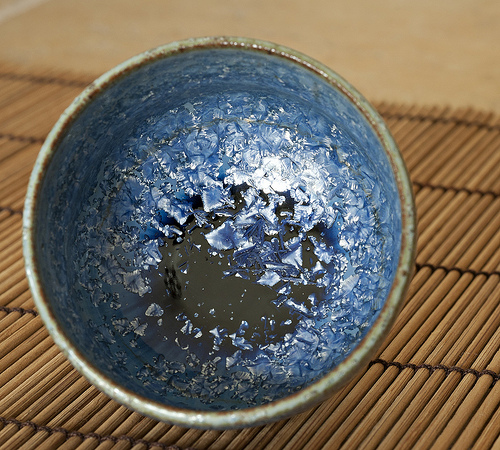
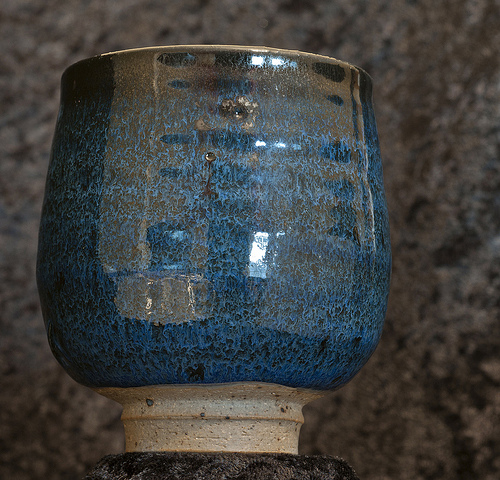

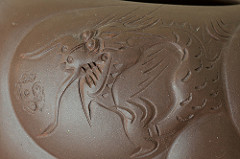

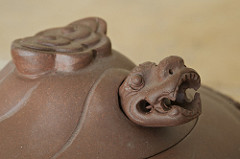
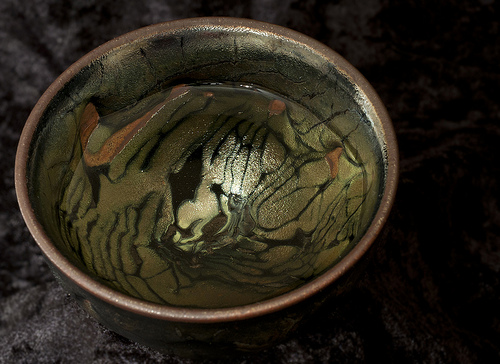
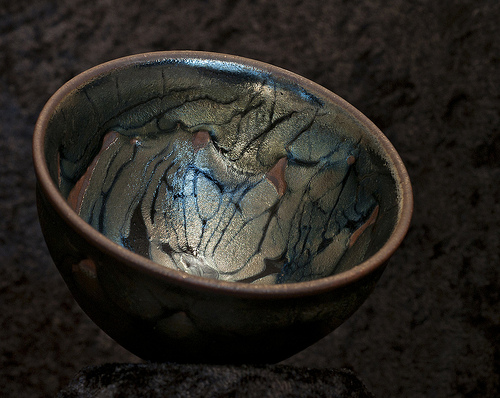
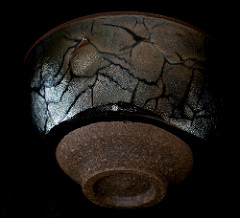
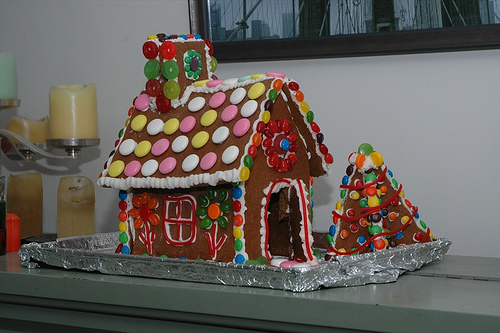
Cleaning floured tea/kitchen towels
in Food Traditions & Culture
Posted
If there are bits of dough stuck to the towel, they'll dry rock hard and be quite unpleasant if they stick to the next loaf. Not starter-like at all. But if the towel is well floured, there shouldn't be any dough stuck to it.
I rinse off my floured towels as well as I can in the sink before putting them in the laundry, and haven't had trouble getting them clean with cold water washing.